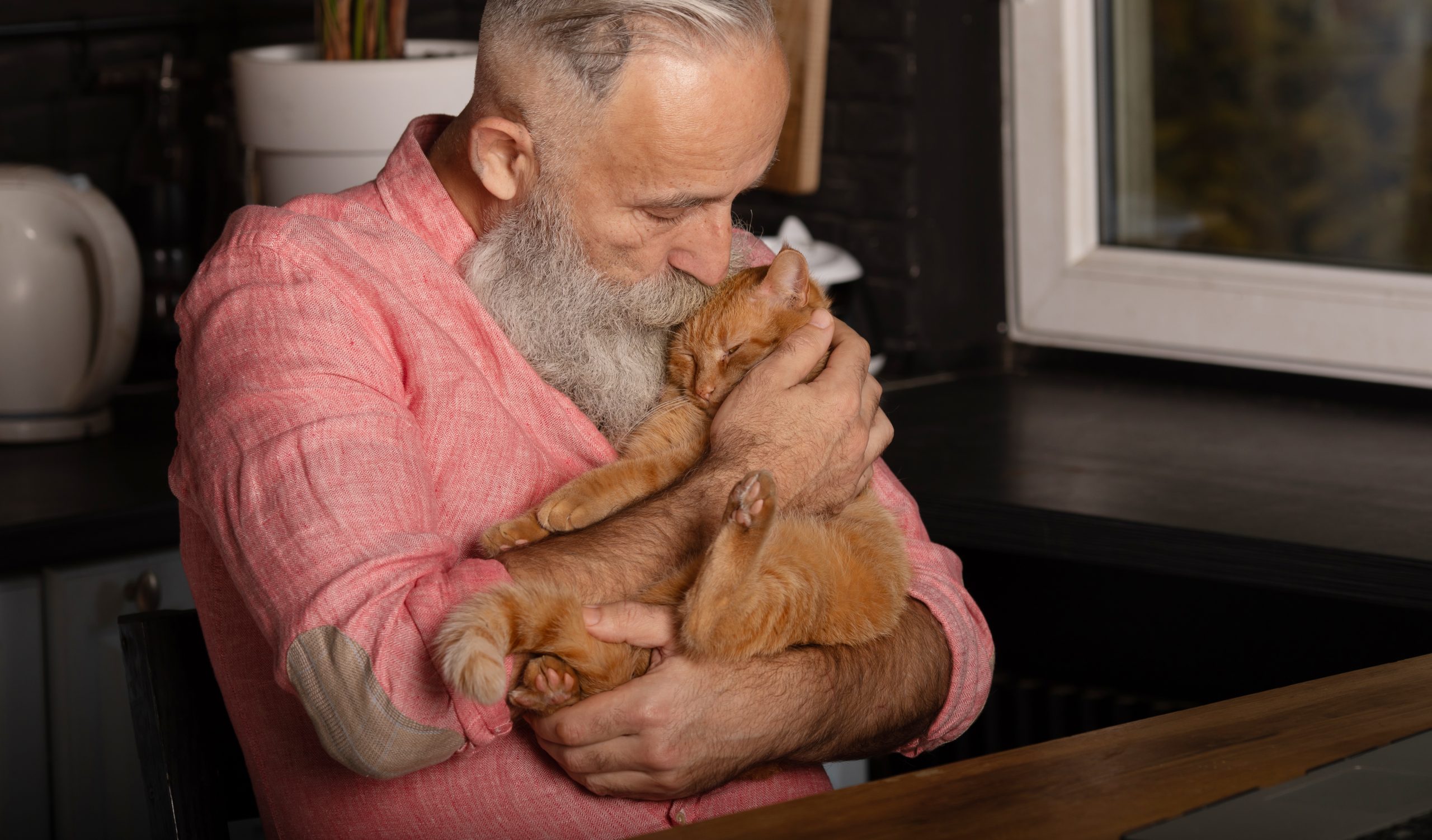
As a cat caregiver, you want to provide the best quality of life for your cat and this includes end of life care. While it can be uncomfortable to think about, end of life care is just as important as regular checkups and having a Cat Friendly home.
Discuss how to judge your cat’s quality of life (QOL) with your veterinarian so they can help you plan as needed. Analyzing your cat’s quality of life can include a series of questions that help you figure out if your cat is healthy, comfortable, or in pain, and able to participate in or enjoy life events.
Cats and Pain
As your cat ages, she will likely begin to have some pain due to natural body changes, possibly from getting older, disease, or illness. It can be difficult to tell when your cat is in pain because they naturally hide signs of weakness. Your veterinarian is trained to notice these subtle signs, so it is important to bring your cat in for regular checkups. During the checkups, talk with your veterinarian and to help determine your cat’s quality of life.
Quality of Life (QOL)
Quality of life is a way to think about or determine if your cat is living a happy and healthy life. This can be difficult to determine, so veterinarians have created a series of open-ended questions for you to think about and answer based on your cat’s behavior. In order to answer the questions, it is helpful to know your cat’s normal behaviors. It is recommended to keep a journal or record of your cat’s normal behavior. Begin tracking your cat’s behaviors when you first bring them home and update them throughout their life.
You can write this information down in a notebook or even a calendar. This can help you notice small changes that occur over time, which you can discuss with your veterinarian. Make sure to write down unusual behaviors, concerns, or questions you have for your veterinarian.
Here are some open-ended questions to explore with your veterinarian when thinking about your cat’s quality of life:
| Topic | Questions to Explore |
|---|---|
| Hurt | How can the pain be reduced or controlled? What can we do to improve comfort? |
| Hunger | How can we improve appetite? |
| Hydration | How can we improve drinking/hydration? |
| Hygiene | How can we improve hygiene? |
| Happiness | What are your cat’s enjoyable activities? Which people are deeply connected? |
| Mobility | How can we improve comfort? |
| More Good Days Than Bad Days | Good Day = normal activities and daily life. Bad Day = nausea, difficulty breathing, pain, discomfort, etc. |
Adapted from “Shearer TS, ed. Palliative Medicine and Hospice Care, Veterinary Clinics of North America Small Animal Practice. 2011; 41(3):477-702″
Here is a 12-month calendar to help you track your cat’s behavior. You can write down “good,” “bad,” or “average” on each day in order to figure out your cat’s quality of life and provide helpful information in making future decisions.
Your cat may act differently at the veterinary practice because it is an unfamiliar place. You can also make a video of your cat at home and record activities, such as jumping or eating. This video helps can help show how your cat normally behaves.
Making Hard Decisions and Creating an End of Life Plan
Saying goodbye to your cat is extremely hard, and creating an end of life plan may be even harder. However, taking these steps will help to provide a smooth transition for everyone including your cat. When creating a plan, it important to involve your veterinarian in all parts.
- Consider end of life planning and decision-making before your cat’s health begins to decline.
- Keep up-to-date records of your cat’s health, including test results from her checkups.
- Prepare a back-up plan for holidays or when your veterinarian’s office is closed; check with local veterinary practices and animal hospitals for emergency services and protocols.
- Speak with your veterinarian about the euthanasia process. There are several euthanasia methods that may be used, and it may help to understand and anticipate the unique steps involved in each.
The decision to euthanize will be very uncomfortable, unpleasant, and emotionally taxing. Pre-planning and preparation can make this decision a little easier. Remember to talk with your veterinarian and ask any questions you have about your cat’s quality of life and end of life care.


